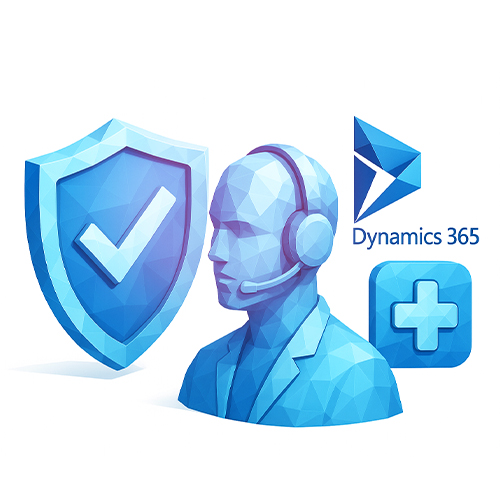
Enhancing Healthcare Security with Dynamics 365 Contact Center

Microsoft Dynamics 365 Contact Center has achieved the HITRUST risk-based, 2-year (r2) certification, widely regarded as one of the toughest benchmarks for safeguarding healthcare data in cloud solutions. That’s not just a badge; it’s a third-party validation that the platform’s control environment has been assessed against a stringent, healthcare-grade standard. The announcement lands at a critical time for providers, payers, and virtual-care innovators who are scaling AI from pilots to patient-facing operations.
AI is already reshaping frontline service, powering self-service conversations, summarizing interactions, guiding human reps in real time, and orchestrating workflows end-to-end. As these capabilities span the care journey, the line between innovation and risk management narrows: every improvement in speed or personalization must be paired with provable governance for protected health information (PHI). HITRUST certification on the contact center core helps you move faster without stepping outside the guardrails.
Want a quick read on what HITRUST for D365 Contact Center means in your environment?
Why HITRUST r2 matters right now
HITRUST’s Common Security Framework (CSF) harmonizes requirements across healthcare laws and standards, building on HIPAA and HITECH while aligning with broader security controls. The r2 assessment is the most comprehensive, risk-based certification tier, designed for organizations handling sensitive data and operating critical systems. In plain terms: if you’re putting AI into patient-facing service, r2 is the level of assurance risk committees look for.
That rigor is especially relevant as “agentic” capabilities take center stage: AI routing by patient intent, interaction summarization, triage across voice and digital channels, and autonomous workflow execution. The more AI participates in sensitive conversations, the more your platform needs verifiable controls for identity, access, data protection, monitoring, and incident response. HITRUST r2 puts a stake in the ground that such controls exist and are operating effectively.
What Microsoft has actually shipped
Dynamics 365 Contact Center is a Copilot-first, standalone CCaaS that brings generative AI to every engagement channel and can connect to the CRM you already use. Since GA, Microsoft has leaned into AI-assisted experiences for customers, agents, and supervisors, positioning the product to reduce handle time, improve containment with self-service, and surface next-best actions in the flow of work. This is the functional layer that HITRUST now wraps with a formal compliance envelope.
On the compliance front, Microsoft documents a broader slate of assurances relevant to healthcare programs, HIPAA coverage, the newly announced HITRUST certification, FedRAMP, SOC, PCI DSS, ISO certifications, CSA STAR, and morewith , evidence available through the Service Trust Portal. For healthcare leaders, that means a single contact-center core can anchor both innovation and audit needs.
From certification to design choices: What healthcare teams should do next
Make privacy-by-design explicit in your contact center architecture
Even with HITRUST on the platform, your risk profile depends on configuration and process. Put least-privilege, strong identity, and role-based access at the center; encrypt at rest and in transit; enforce DLP and data-minimization in transcripts, call recordings, and analytics; and standardize retention against policy and law. (Microsoft’s contact-center compliance docs are your baseline reference as you define these patterns.)
Treat AI like a regulated system component.
Define where PHI may enter prompts or summaries, which data stores are in scope, and how redaction or masking operates across channels. Establish human-in-the-loop escalation paths for higher-risk intents. Monitor model outputs and agent assist recommendations with auditability in mind. As AI expands, your governance should evolve from “allow/deny” to “allow with controls, observe, improve.” (Microsoft’s product direction around agentic and omnichannel capabilities underscores why this governance needs to be living, not static.)
Integrate contact-center AI with clinical and administrative systems deliberately
Use a clear interface strategy across CRM, EHR, scheduling, and claims, avoiding PHI sprawl by mapping data flows and scoping which systems of record are authoritative. The value is real, fewer handoffs, faster first-contact resolution, but so is the responsibility to keep every integration inside policy. Dynamics 365 Contact Center is designed to meet you where you are on CRM, which helps reduce rip-and-replace risk while you harden controls.
How Techverx helps you operationalize this safely
Techverx implements Microsoft cloud solutions end-to-end and brings HealthTech-specific delivery patterns so AI doesn’t just “pass a demo,” it scales under audit. Our Azure practice (Microsoft Azure Solutions Partner) architects landing zones, identity, policy, and observability tailored to compliance needs, so your contact center isn’t a one-off but part of a governed cloud foundation. Our AI & ML team builds patient-safe automations and analytics with MLOps controls for versioning, monitoring, and rollback. And our DevOps/SecOps services automate deployments with guardrails so changes remain fast and traceable.
We also speak “healthcare” in delivery: our HealthTech portfolio includes HIPAA-sensitive telehealth platforms and virtual-care solutions where we stabilized EMR integrations, refactored for privacy, and scaled secure patient interactions, experience that translates directly into safer Dynamics 365 Contact Center rollouts.
Need a pragmatic plan?
What the HITRUST r2 badge really buys you
A validated r2 assessment signals more than “we care about security.” It affirms the platform has undergone a rigorous, risk-based evaluation with control tailoring appropriate to high-sensitivity workloads, exactly the class of workloads you encounter in patient access, care management, pharmacy services, and payer interactions. For boards and compliance officers who ask “how do we know?”, r2 is the answer that stands up in the room.
Pair that with Microsoft’s product direction, Copilot-first, omnichannel, and increasingly agentic, and the path becomes clear: use D365 Contact Center as the secure nucleus; layer AI where it makes a measurable difference; and let your governance keep pace with capability.
Built for what’s next
As healthcare organizations modernize service operations, unify data, and adopt agentic AI to improve experiences and efficiency, Dynamics 365 Contact Center keeps trust and compliance central to every interaction. With HITRUST r2 in hand, and a growing roster of certifications, healthcare leaders can move beyond “can we?” to “how fast can we, safely?”
Ready to move from compliant-in-theory to secure, AI-enabled in production?
Book a Techverx consultation. We’ll review your contact-center roadmap, map HITRUST controls to your environment, and define a step-by-step plan to operationalize AI safely, on the Microsoft cloud you already trust.
Prefer to explore first?
Browse our Cloud Services, AI & Machine Learning, and DevOps/SecOps/MLOps practices, then tap us for a focused session on Dynamics 365 Contact Center in your context.

Rachel Kent
Rachel Kent is a Technology Advisor at Techverx based in McKinney, Texas, specializing in digital strategy, scalable architectures, and “right-fit” solutions. With a background as a Software Engineering Lead and full-stack engineer across healthcare and tech, she bridges business goals with modern stacks to rescue stalled projects, modernize legacy systems, and deliver ROI-focused outcomes.
Hiring engineers?
Reduce hiring costs by up to 70% and shorten your recruitment cycle from 40–50 days with Techverx’s team augmentation services.
Related blogs


